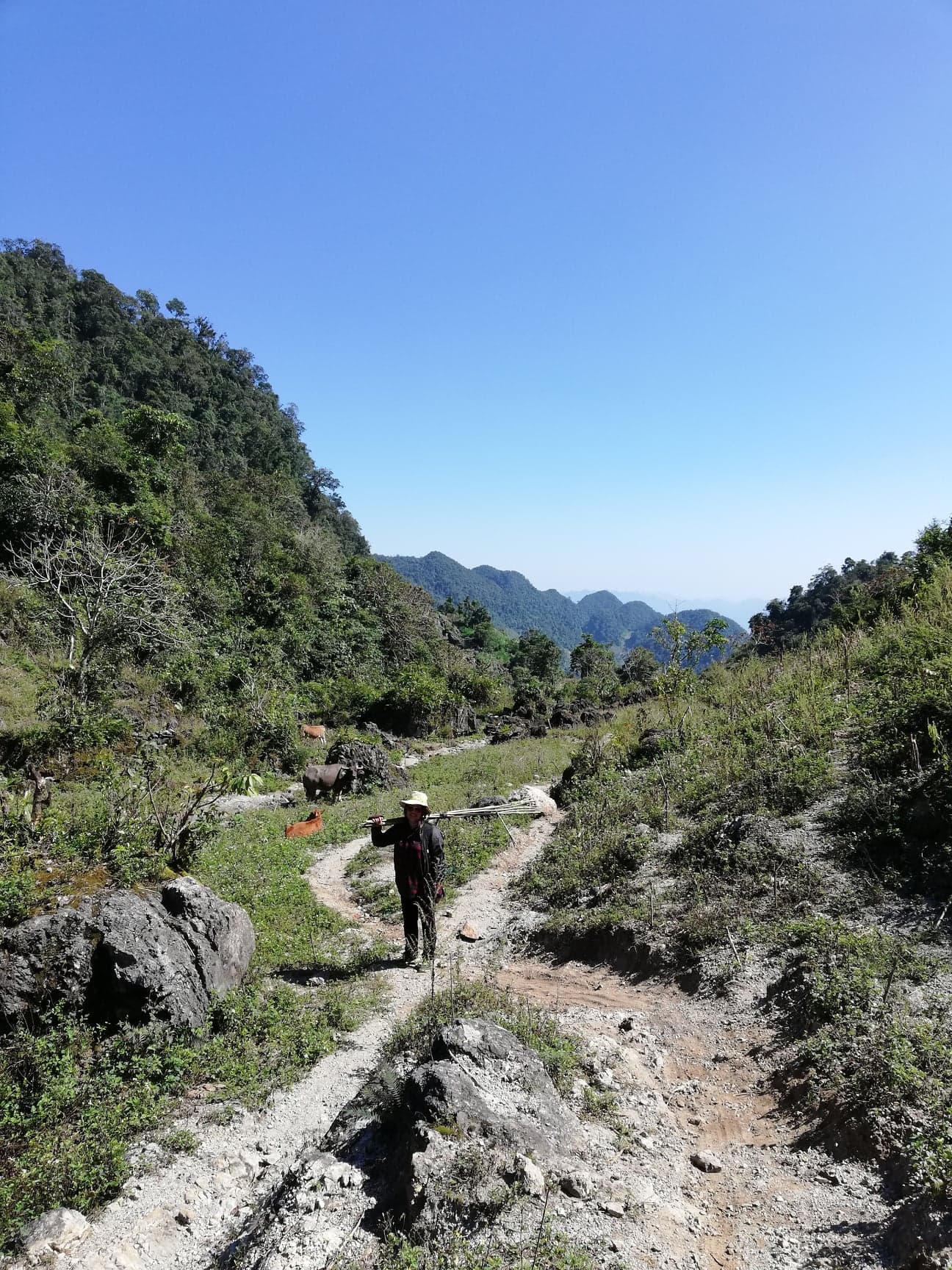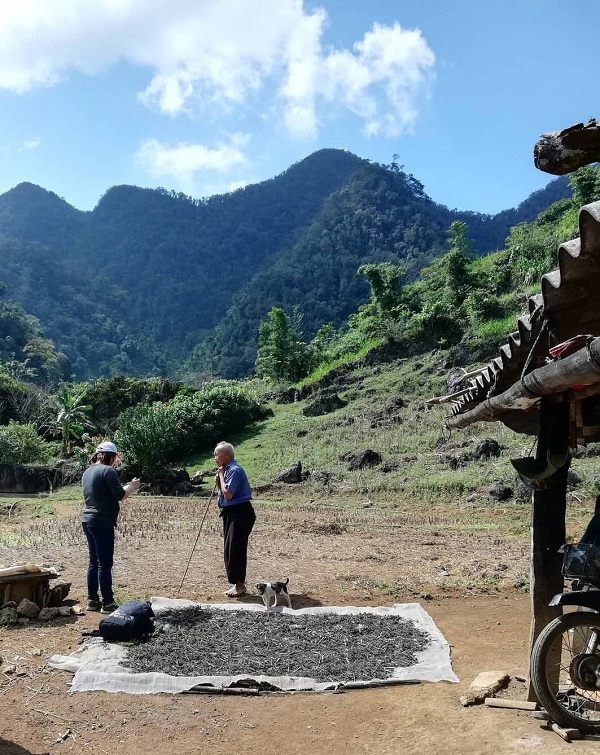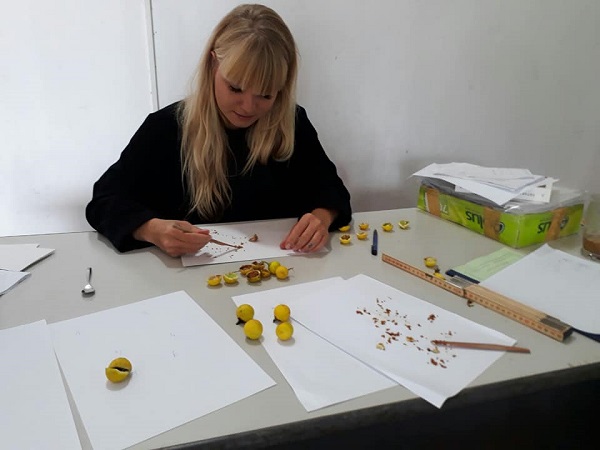Vietnam is recognized as one of the world's most biodiverse…

My Good Experiences in Van Ho
Luna Naja Rosendal is a M.Sc student in environmental risk from Roskilde University, Denmark. In this story, she shares her experience of doing field research, as part of her M.Sc program, in Van Ho district of Son La province with support from PanNature‘s field team.
When I was 23-26, I lived as an expat in Ho Chi Minh City. During that time, Vietnam became very dear to me. After moving back to my home country Denmark for two and a half years, I decided to come back to write my Msc thesis. As much as I thought I “knew” Vietnam, I was fully aware that there is so much more to this country than what the lively streets of Saigon have to offer. And as much is I enjoy everything Vietnam has given me, I wanted to give something back to the country that had taught me so much. When PanNature offered to host me in Van Ho, Son La Province during my stay, I knew that this would be nothing like my former experiences.
When I leave in December, I will have lived in Van Ho for 2 months. I came here with the academic goal, to assess the stage of the invasion of the spiky shrub Solanum viarum in Hang Kia – Pa Co Nature Reserve in Hoa Binh.



Every morning, my research assistant Ms. Cam Tu Lan and I, drive our little red Honda Wave 37 km to Hang Kia – Pa Co, where we enter the beautiful mosaics of cultivated valleys, small villages and forested mountaintops.
Most of our days are spent counting invasive plants along a 50-meter-long transect within different vegetation types. Along with recording the distribution of this spiky plant, we interview local farmers about their experiences with the shrub as well as their suggestions for future management. Even though I don’t understand any of the words being exchanged during these sessions, I’ve come to appreciate these moments a lot. The locals in Hang Kia – Pa Co are all extremely welcoming and interested in my research. They invite us into their fields, gardens and homes, and often offer us a pomelo from the tree in their backyard, freshly squeezed ginger juice or homemade bamboo paper to bring home as a souvenir.


Even though my interest in invasive alien plant species was what brought me here, my time in Van Ho has also taken me on a personal journey.
I spend most of my free time, with my research assistant and PanNature’s two field officers Mr. Phan Van Thang and Mr. Ha Cong Liem . From day 1, they have all made me feel very welcome and home by helping me with my research, showing me around the area, and cooking delicious food for me 3 times per day.


Despite several attempts to learn the Vietnamese language, I am ashamed to say that unfortunately: Toi khong noi duoc Tieng Viet (I can’t speak Vietnamese). While the field officers are doing their best to speak English, and I Vietnamese, we are grateful for Google Translate but when the internet is unstable, I get by with the few sentences I know: “Khong hieu” (I don’t understand), “Dong y” (Agree) and “Troi!” (Oh my God!). No matter what, we always seem to understand each other in the end.


As a Danish woman who grew up in the capital, Copenhagen, I was convinced that I would encounter deadly animal species on a daily basis, like snakes, panthers and bears. However, I am pleased to say that to this date, we’ve mostly met piglets, ducklings, cows and buffaloes, all of whom seemed more than okay with our presence in their natural habitat.
Another thing that came as a surprise to me, is the ever-changing weather. On a burning hot and sunny day, you will suddenly see the fog come crawling over the mountaintops in to the villages, making the temperature drop 10-15 degrees within 15 minutes and making it impossible to see further than 10 meters ahead of you.
All of this, is what makes Son La and Hoa Binh among the most stunning areas I’ve ever seen.


In the future, when I am back home in cold Scandinavia, I will look back at these two months and remember all the beautiful hikes, the amazing people and the many evenings eating hot pot on the floor in PanNature’s field office, accompanied by what seems to be bottomless bottles of local rice wine.
Once again, Vietnam has welcomed and amazed me, and I am forever grateful for that.
|
PanNature’s field office is located in Bo Nhang 2 Village, Van Ho Commune, Van Ho District, Son La Province. The area is known for not only high biodiversity values, but also home to various ethnic minorities with diverse culture and lifestyle linked with the forest. The field office is equiped with computers, Internet facility, a library, and 02 motorbikes. It can provide accommodation for 6-8 people. In 2017 and 2018, the field office has welcomed dozen of students from domestic and overseas universities for research activities. The office also has a nursery, which serves as an experimental facility for research activities on propagation and cultivation of local plant species. PanNature’s field staff has extensive experience in working with endangered and native species in the nursery environment. |



